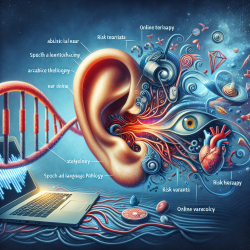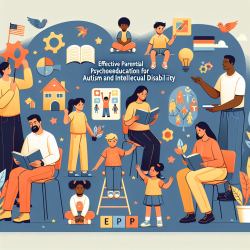Introduction
As a speech-language pathologist passionate about creating positive outcomes for children, understanding the physical fitness and activity levels of children with Autism Spectrum Disorder (ASD) is crucial. Recent research highlights significant differences in physical activity and fitness between children with ASD and their typically developing peers. This blog will delve into these findings and explore practical strategies for practitioners to enhance physical fitness in children with ASD.
Understanding the Research
The study titled "Physical Activity and Physical Fitness of School-Aged Children and Youth with Autism Spectrum Disorders" provides valuable insights into the physical fitness disparities faced by children with ASD. The research compared 17 children with ASD to 12 typically developing peers, using various fitness assessments such as the 20-meter shuttle run, sit-and-reach test, and handgrip strength measurement. Physical activity levels were also monitored using accelerometry.
Key Findings
- Children with ASD exhibited significantly lower strength compared to their peers.
- They engaged in less light, moderate, and moderate-to-vigorous physical activity.
- However, flexibility, aerobic fitness, and BMI were comparable between the two groups.
Practical Strategies for Practitioners
Given these findings, practitioners can play a pivotal role in bridging the fitness gap for children with ASD. Here are some evidence-based strategies:
- Incorporate Adapted Physical Activity Programs: Tailor physical activity programs to meet the unique needs of children with ASD. Focus on activities that enhance strength, such as resistance training and functional exercises.
- Leverage Peer Mentoring: Encourage peer involvement in physical activities. Peer mentoring can motivate children with ASD and provide social interaction opportunities.
- Utilize Data-Driven Approaches: Regularly assess and monitor physical activity levels using tools like accelerometers. Use this data to customize and adjust programs for individual children.
- Promote Inclusive Physical Education: Ensure that children with ASD are included in physical education assessments and activities. This inclusion aligns with federal special education laws and promotes overall health and wellness.
Encouraging Further Research
While this study provides valuable insights, further research is essential to explore the determinants of physical activity in children with ASD. Understanding these factors can help practitioners develop more effective interventions. Practitioners are encouraged to stay informed about the latest research and incorporate new findings into their practice.
To read the original research paper, please follow this link: Physical Activity and Physical Fitness of School-Aged Children and Youth with Autism Spectrum Disorders.










